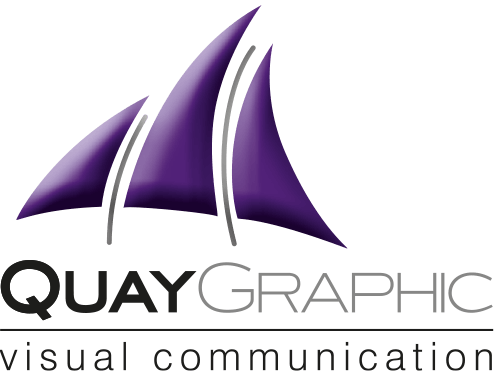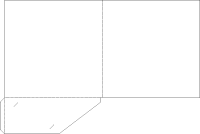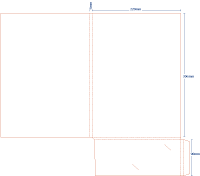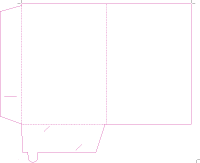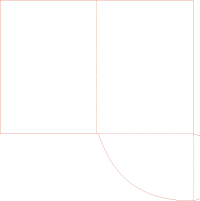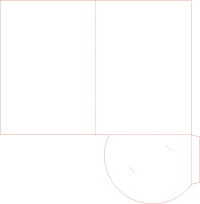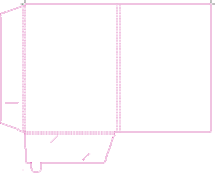Useful resources
To help your print job move efficiently through our system, please review the following FAQ’s to ensure that your files are correctly formated and print ready. If our hints and tips are unable to help you, then please phone us and a member of our team will be happy to help.
At the time of quotation, tell us what format your artwork will be supplied in, the software version, and whether it is PC or Mac format.
Supply of artwork for Mac QuarkXPress, InDesign and Pagemaker:
All picture files, fonts and document files must be supplied along with lasers of the job.
If artwork is produced in Photoshop, Illustrator or Freehand:
Convert all text to curves (Freehand), shape (Photoshop 6.0 and above), or outlines (Illustrator) as this will ensure there will be no problems with fonts. If using Illustrator or Freehand, ensure any linked files are embedded or supplied.
Supply of artwork for PC QuarkXPress, Pagemaker, Publisher:
All picture files, fonts and document files must be supplied along with lasers of the job.
Submitting files created on PC applications:
When submitting files from PC applications they usually require some additional work to make them print ready. Please ensure we are aware of the format they are being supplied in for us to allow additional time in be schedule.
PDF’s:
PDF’s must be created in the following way. Ensure you choose high resolution. Make sure that there is 3mm bleed all round the PDF. If it is not saved in this format, we may not be able to use it as artwork. If there are any changes to the job, you may have to amend and re-supply the artwork.
EPS’s:
Any file formats not listed above must be saved as an eps or jpeg. If there are any changes to the job, you may have to amend and re-supply the artwork as we will be unable to change it. Ensure file has bleed and crop marks and please confirm the final size of the artwork and supply a laser print for reference.
Bleed/Crop marks:
All artwork must have 3mm bleed on each side if you require the image to bleed off the edge of the paper. Crop marks should be included if artwork does not fill a whole page area and should be coloured as ‘registration’ to ensure they appear on each colour separation.
Bookwork:
If you are supplying a document with multiple pages, please try, if possible and make the front cover of the document page 1 and the back cover the last page.
Photoshop or other picture files:
Photoshop files must have a resolution of 300 pixels per inch or higher. If the file is a Bitmap tiff the file should be at least 1200dpi. Images should be CMYK.
Spot colour jobs:
Be sure to print out a separated laser proof to make sure all colours are split and that there is only one version of each spot colour (i.e. there isn’t two versions with CV and CVC at the end of the colour name).
Colour matching:
If you have any concerns regarding colour matching when printing, please supply a print sample for us to match. If you are concerned about the colour of your print, please ask about being supplied with a wet proof.
Sending artwork:
Files below10Mb should be fine to email. For files larger than 10Mb, please use a file sharing service such as WeTransfer or Dropbox.
We require print runs in their hundreds of thousands. Do you have that sort of capacity?
Absolutely! We have invested in one of the best printing presses you can get – a Heidelberg – in order to support the very considerable print runs required by many of our clilents.
Generally speaking, what is your turn around time for a typical print job?
Every job is different, but as a general rule of thumb please allow 5 working day for any standard job. Extra processes such as laminating, forme-cutting and embossing can add considerable time onto the production schedule.
Why might I talk to you about the type of paper I want? It’s pretty straightforward isn’t it?
Well, different weights and finishes provide different end results and on a practical basis you might need to avoid things like using glossy paper for forms that require completion – the ink takes forever to dry!
Does four-colour printing include black and white?
Black is one of the colours used in four colour printing, and white is technically not a colour and is not printed at all – it is simply the paper beneath the ink showing through, so yes, four colour does include an element of black and white!
Paper Sizes
International Paper Sizes (in mm)
A0 841 x 1189
A1 594 x 841
A2 420 x 594
A3 297 x 420
A4 210 x 297
A5 148 x 210
A6 105 x 148
Envelope Sizes in mm
C3 324 x 458 (to fit an A3 sheet)
C4 229 x 324 (to fit an A4 sheet)
C5 162 x 229 (to fit an A5 sheet)
C6 114 x 162 (to fit an A6 sheet)
DL 220 x 110 (to fit a compliment slip)
Paper Finishes
Art – A type of coated paper.
Coated paper – paper which has received a coating on one or both sides providing an even surface.
Uncoated paper – the general name for paper grades that have not been coated.
Laid – paper with a texture.
Woven – a paper which shows an even texture rather than a parallel line pattern.
g/m2 – the abbreviation of grams per square metre. A method of indicating the substance of paper or board on the basis of weight in grams per square metre. Can also be written as ‘gsm’.
Art Paper – a term used to describe the best quality of coated papers that have a coating of china clay or other mineral applied to each side of the sheet, which is then ‘calendered’ by steel rollers to give a gloss finish.
Matt coated paper – has calcium carbonate added in its production to make a more satin effect from an art paper.
Cast Coated Papers – this paper has a very high gloss finish achieved by using a special coating and the surface is then polished by stainless steel drying cylinders.
Watermarked Paper – an impression is pressed into the top of the sheet on manufacture. This is normally used in high quality writing papers. i.e. Conqueror.
Carbonless / self-copy paper / NCR – Paper specially coated to produce an image in black when pressure is applied. Used extensively in sets. There is a top, middle and bottom sheet with the coatings applied accordingly.
Pulpboard – matt uncoated boards in white or tinted ranging from 200micron thickness to 750 micron.
Bank and Bond – bank paper is under 63g/m2. Both are stationery papers supplied in a variety of colours with a matt uncoated finish.
Newsprint – pulp print paper containing a small percentage of chemical wood pulp. Grammage 45-50g/m2.
